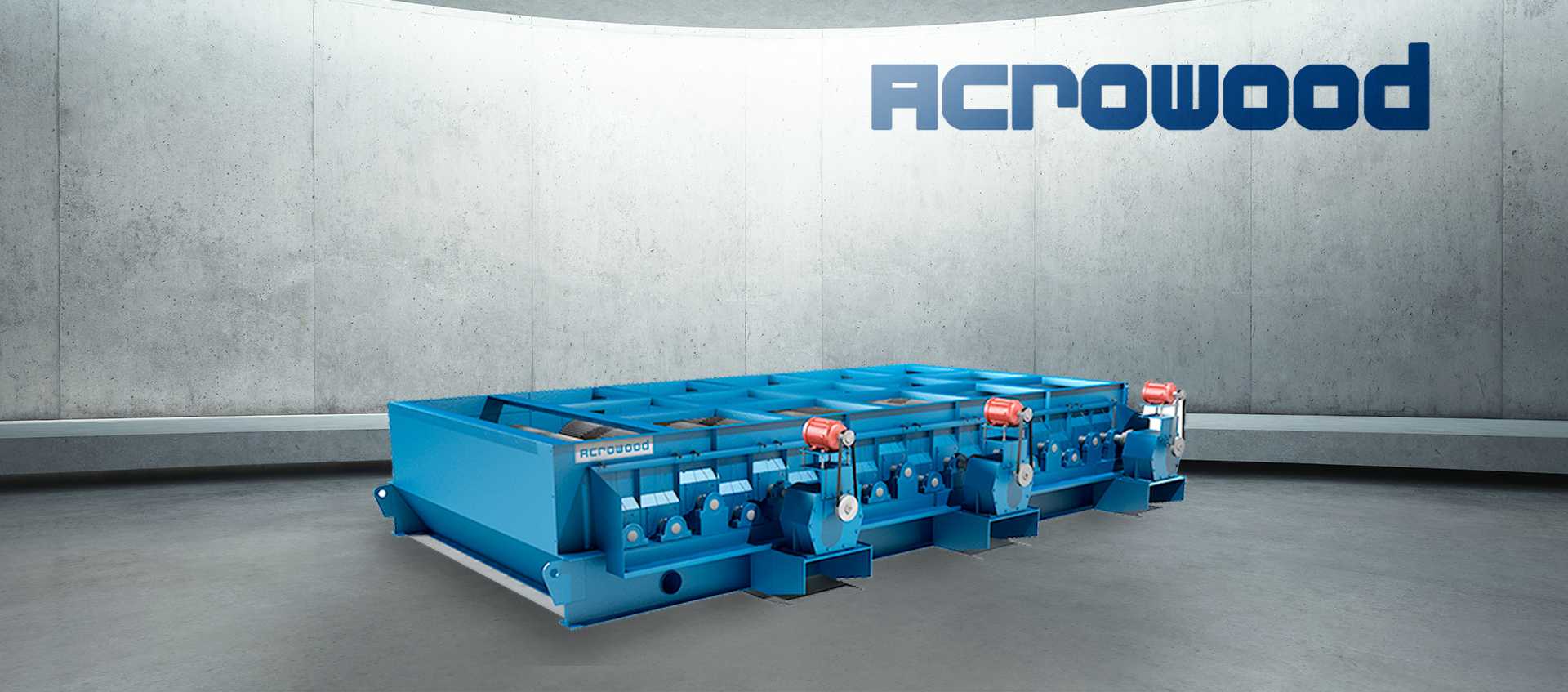SCREENING
Trillium® OSB Strand Screen
Leading innovation in OSB screening technology
The Acrowood Trillium OSB Strand Screen
The challenge of efficiently screening limp, wet, fines-rich green strands has been met with Acrowood’s patented TrilliumTM Screen. The Trillium is superior at screening dry or green OSB strands, reducing downstream processing costs. On green strands, the Trillium screen can save capacity and energy in the drier. As much as 15% of fresh strands are fines. On dry strands, the Trillium offers supreme fines removal with great strand retention. Pair with Acrowood’s DiamondRoll® Fines screen for superior strand recovery.
Trillium® OSB Screen Features
- Excellent flake agitation for effective fines separation from either dry or green OSB strands
- Also suitable for sawdust or bark/biomass cleaning and screening
- Drive design uses sintered bushing chain to eliminate periodic lubrication or oil baths for reduced and easy maintenance
- Simple screen construction with a low profile design, easily sealed for dust containment
- Can be used as a strand pre-screen in conjunction with an Acrowood DiamondRoll™ Fines Screen or Acrowood Dual Drive Suspended Rotary Screen for final fines separation
- Specifications such as disc IFO (Interface opening), roll speed, screen angle, and more can be manipulated to fit every mill’s needs
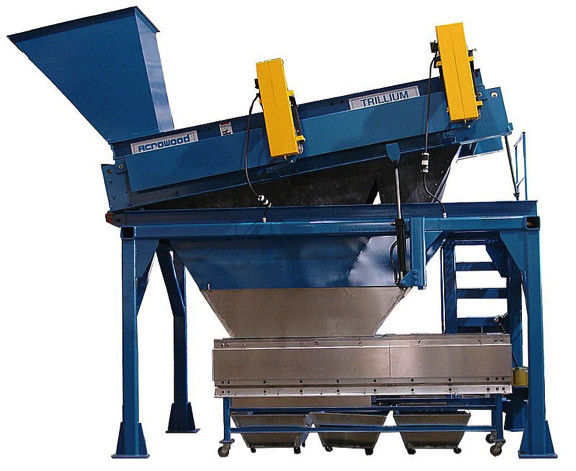
How It Works
In mill trials, Acrowood set up an 18-shaft screen with Trillium discs – three-sided discs manufactured with the DiamondRoll drive system. The triangular shape of the discs provided greater agitation.
A recent testing of our screen structure showed an overall efficiency of 93% green. The Trillium retained 74% of the large strands that topple and tumble over the surface of the screen, (that will form the surface of the board) while passing 26% of the undersized material through the screen’s 3mm IFO.
The method allows fines to pass with the small strands, and uses a DiamondRoll Fines Screen below for good strand recovery.
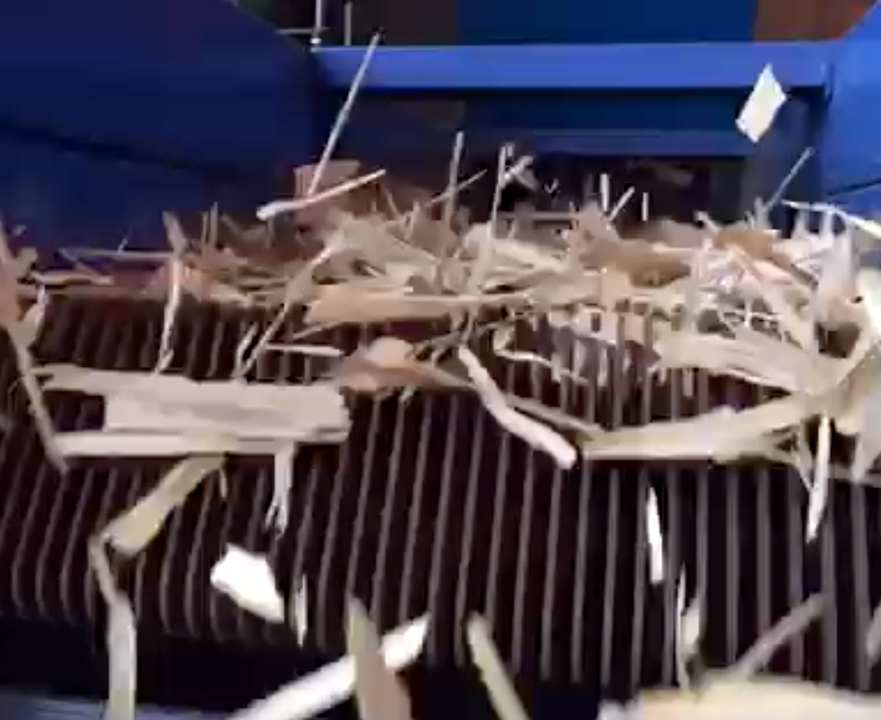
Machine Basics
The Trillium Screen uses the DiamondRoll drive design, a tried and true method. Key to the DiamondRoll and Trillium Screens’ adaptability is the drive system. Each drive group uses a continuous loop of chain, which drives each shaft. A single motor is located at the discharge end of each drive group. On one end of the shaft a special sprocket, known as a rack tooth sprocket, engages the chain as it is pulled across the top.
Because of the design of the teeth in the rack tooth rocket, the chain pulls the shaft smoothly, transmitting the power of the chain to the rolls. This drive system has proven to be efficient and strong, and an improved design over the “loop to loop” drive system.

Retaining More Desirable Strands
This photograph shows the <6 mesh, >14 mesh fraction generated by classification of the Trillium Accepts. The Gilson classifier upended these long slender strands and passed them through the 6 mesh screen. Using a 6 mesh fines definition, this material would be classified as “fines” and targeted for removal. Our impression is that this fraction is desirable and should be retained.
Maximum Application Flexibility
With great flexibility the Trillium and DiamondRoll Screening combination can be adjusted to fine tune the amount of material passed versus carried over the end of the screen. It provides high efficiency while maintaining the quality of the strands.
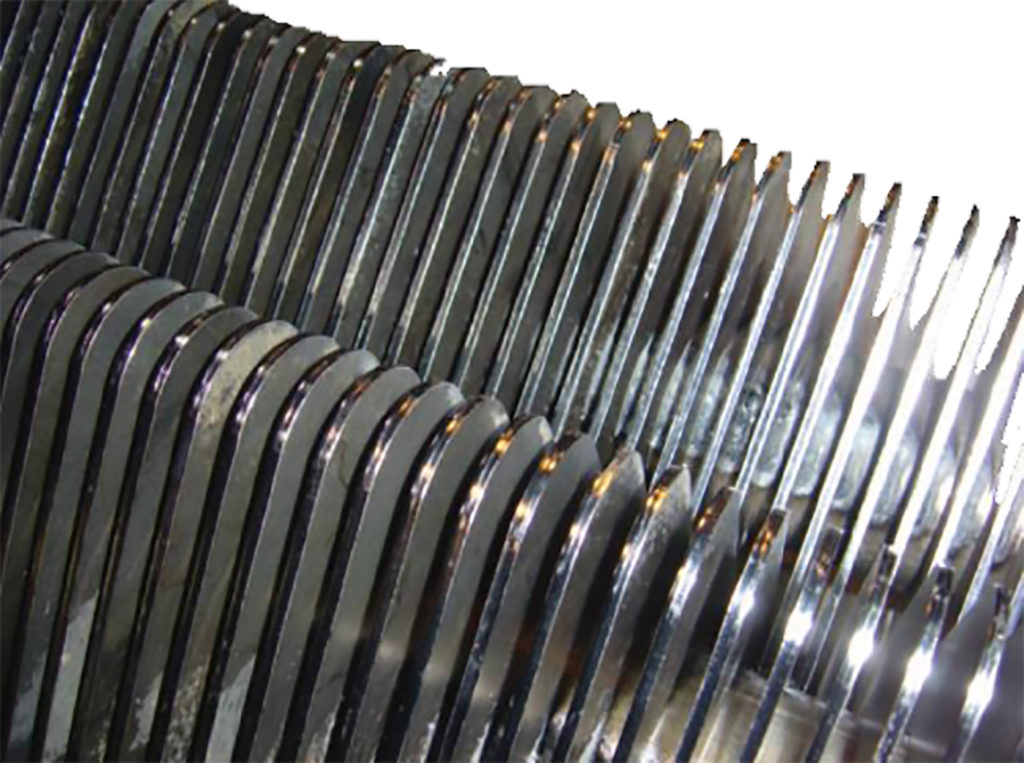
Robotic Fabrication
Shafts are fabricated using a computer controlled robotic welder for precise disc positioning. The unique three-lobed disc shape provides excellent agitation for effective fines removal from either dry or green OSB strands.
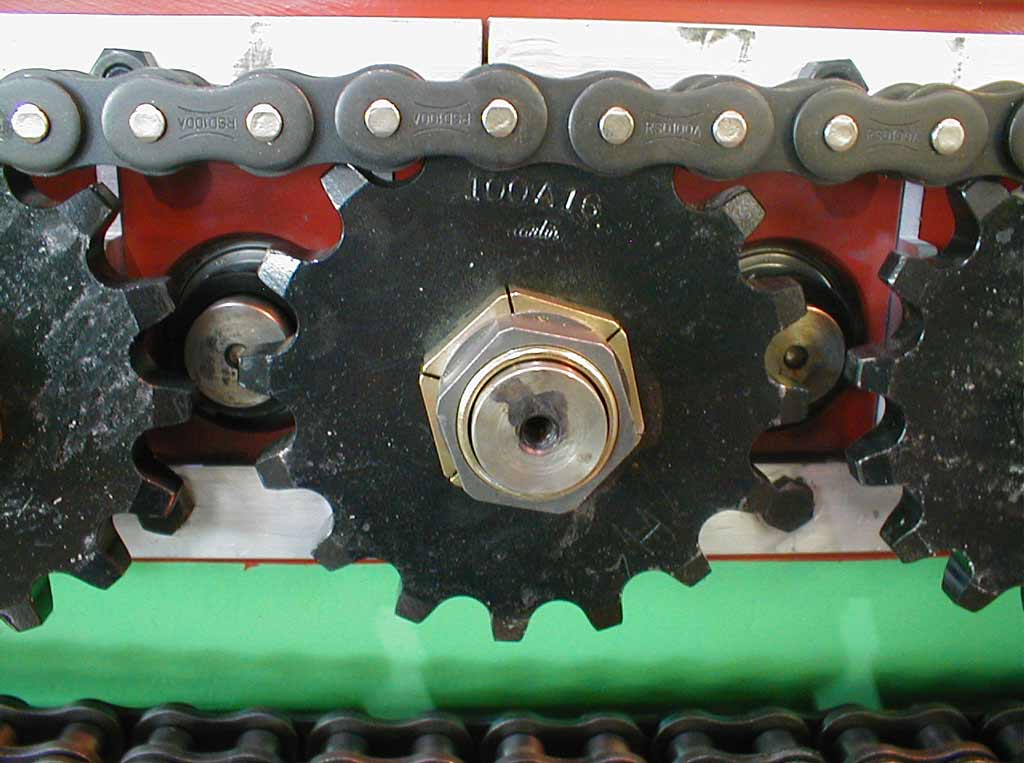
Trantorque™ Bushings
Rack tooth sprockets fixed to the shafts using Trantorque™ bushings drive the shafts via sintered bushing chain. This simple, reliable drive system requires no periodic lubrication. Shaft bearings are sealed for life.

The triangular shape of the discs provides great agitation
The large strands that topple and tumble over the surface of the screen will form the surface of the board while the undersized material passes through the screen’s 3mm IFO to a DiamondRoll VIRO Fines Screen below. This method allows fines to pass with the small strands while recovering good strands on the Diamond Roll.
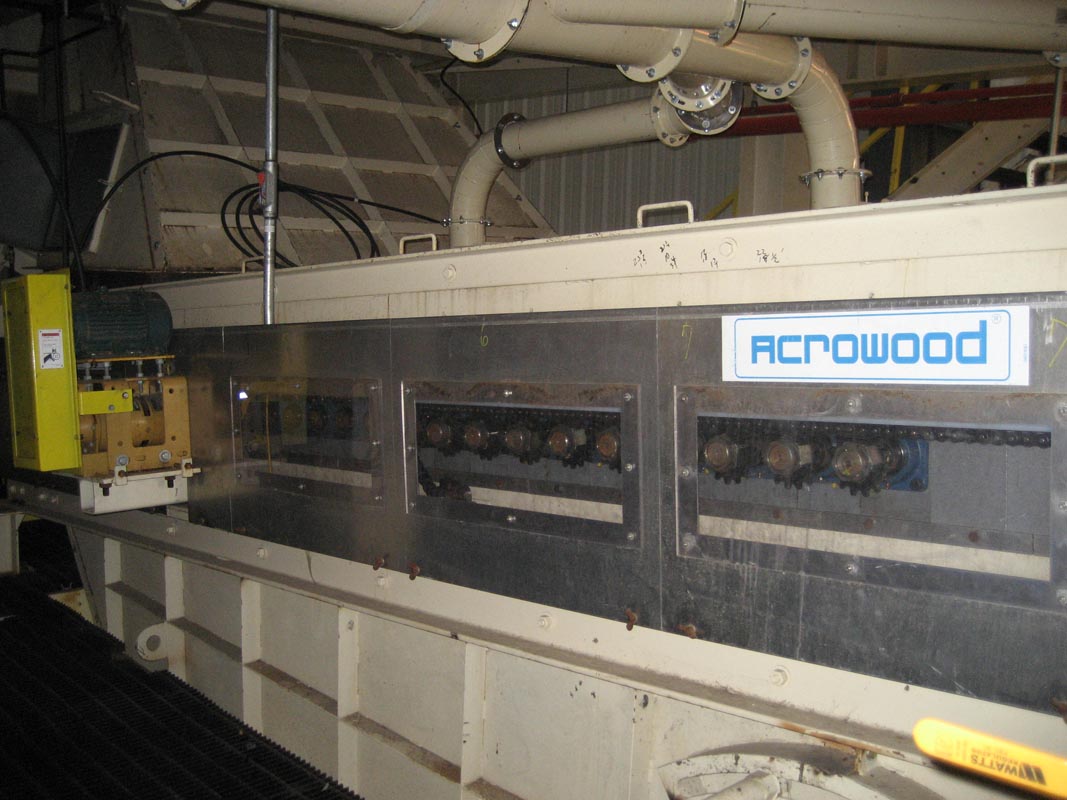
Complete control of OSB strand separation characteristics
Variable frequency drive control of the individual drive groupings provides an operator control of the separation characteristics of the screen. Fines and the smallest strands fall through the first or early sections of the screen. These are directed to the inlet section of the DiamondRoll. Larger intermediate strands fall through the end of the Trillium, and are subsequently directed to the discharge end of the DiamondRoll.

Chain needs no lubrication
Oil lubrication has been eliminated from the side frame, since the chain is lubricated for life. The chain is a high strength sintered bushing roller chain, with lubricant incorporated into the structure of the bushing itself. The flange mounted bearings are grease lubricated. The fittings can be accessed directly, or can be piped to a central lubrication manifold. All components are built with long service life and minimal maintenance requirements in mind.
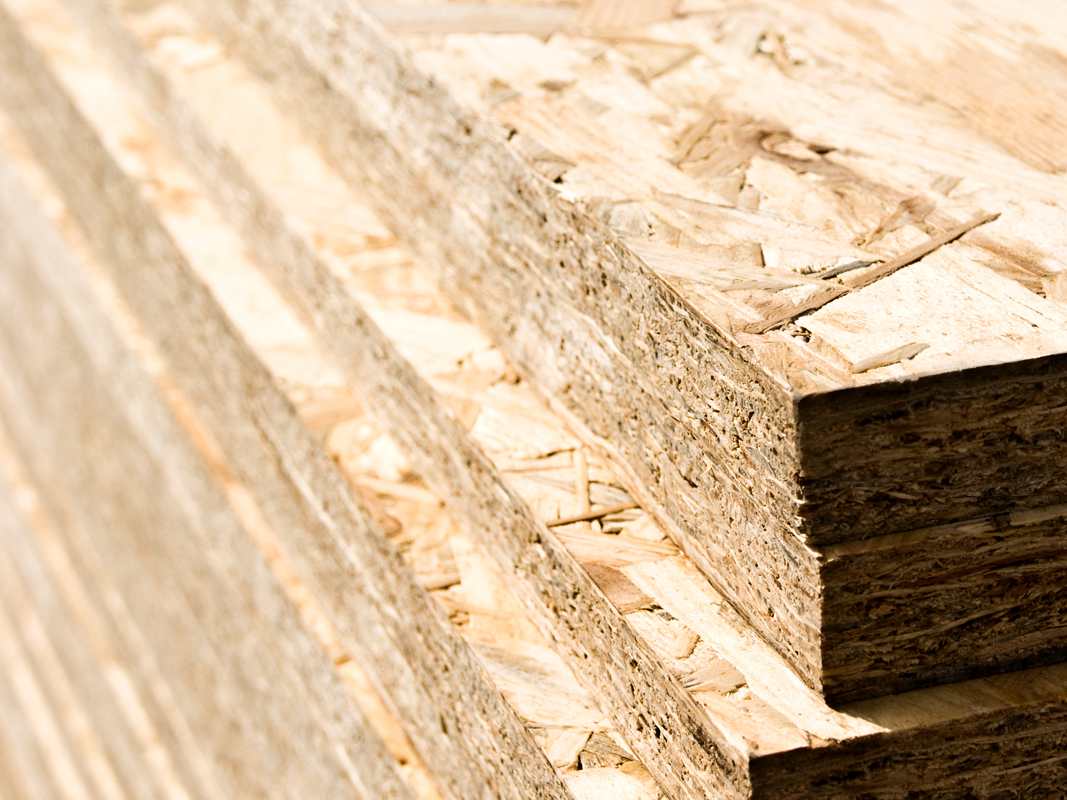
Dramatically increase your production efficiency
Limp, wet and fines rich green strands have always been a challenge to efficiently screen. The Acrowood Trillium Screen is the best solution to the problem. Improve board properties, and they rob resin efficiency. Screening this material poses many challenges. Acrowood’ s Trillium Screen agitates the fiber, liberating the fines from strands. The patent-pending disc shape achieves this without damaging strands. No other screening method available achieves this degree of separation.
Acrowood’s Automatic Welding Machine assures critical IFO accuracy
Accuracy in the placement of discs during the welding process is critical to IFO control. To meet this challenge Acrowood developed a unique welding controller that accurately locates the discs on the shaft length, holds them in place while the disc is welded, and then checks the flatness of the disc after welding is completed. A welding collar moves down the shaft to locate the discs and weld them, while the shaft turns to permit high strength welding at the base of the disc. Indexing from a machined point at the starting end eliminates the usual stack-up problems of variations in disc thicknesses and spacer arrangements that can defeat IFO accuracy in other designs.

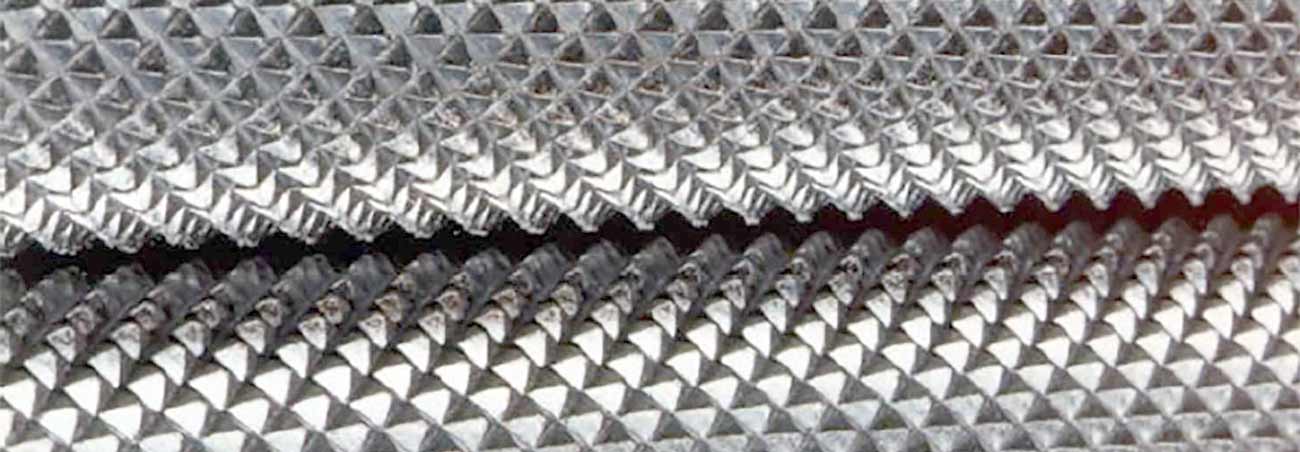
Success is in the Rolls
The Trillium Screen allows fines to pass with the small strands where they are removed with a DiamondRoll FInes Screen. The DiamondRoll VIRO Fines Screen typically separates more than 90% of fines from usable pin chips at high production rates, saving 70% to 90% of the valuable fiber rejected by other screening methods.
The solid alloy steel shafts are machined with a surface topography that briskly moves the chips from the inlet to the discharge. Chips travel across a series of parallel, rotating rolls. As these diamond-patterned rolls rotate, fines migrate into the valleys and are rejected through the Inter-Roll Openings (IRO). Pins and chips larger than the IRO are carried over the surface of the screen and off the end. This method is proven extremely effective, even with cold and frozen chip conditions. Snow and ice mixed with chips and sawdust do not stick to the rolls, making this screen ideal for cold weather operations. The diamond-patterned surface topography of the rolls, and the rolls’ constant motion, prevent chips from plugging the screening surface.
Instant Adaptability
High opening accuracy is the key to operating the screen for maximum possible efficiency. Using solid, alloy steel shafts as the base material for the rolls helps to maintain the straight and constant opening. Textured rolls with application-specific patterns set the base selectivity for one type of fines over another. The combination of highly accurate openings and machined roll textures means that each DiamondRoll Screen achieves the very best possible separation selectivity and ultimate screen performance.
The DiamondRoll’s Variable InterRoll Opening (VIRO) allows the spacing between the shafts to be set to meet the specific needs of the application. The IRO and the speed of the shafts can be independently controlled to work together for supreme screening accuracy, a tremendous benefit where chips or processing requirements are a constantly “moving target.”
The Trillium® OSB Screen brochure
Request the Trillium OSB strand screen brochure provided in PDF format for easy reading and printing.
View the Acrowood Corporate Video
Over a century of experience engineering equipment and machinery for pulp and paper, sawmill, panel board and biomass industries.

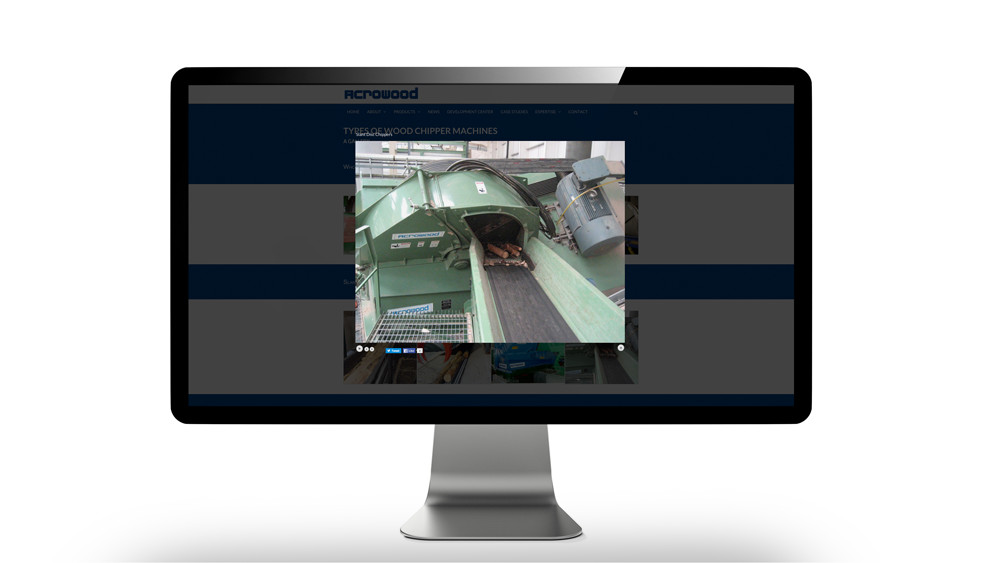
View Acrowood machinery installations at sawmills, pulp and paper mills, panel board mills and biomass facilities all around the world
View the gallery of chipping, cracking and slicing machines, chip screening & material distribution machines, and rotary & batch debarker machines.


